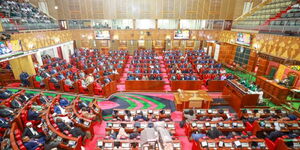In Kenya, land is a very precious commodity. It is one of the best ways to have a long-term investment due to its high rate of appreciation and variety of uses.
It is for this reason that land is typically expensive, involves several legal processes, and can be a highly contested issue either in court or other settings.
Laws governing land in Kenya are housed under Chapter Five of the Constitution, through principles of equity, classification of land, tenure systems, restrictions on non-citizen ownership, and the establishment of the National Land Commission. Other supporting forms of legislation are the Land Act (2012), Land Registration Act (2012), and Community Land Act (2016).
However, it is within this same Constitution that exists a ‘loophole’ known as adverse possession that can lead to a certified land owner losing ownership of their land.
In Kenya, this legal doctrine allows a person to claim ownership of land by occupying it openly, exclusively, continuously, and without the owner's permission for a minimum, uninterrupted period of 12 years.
It is housed under the Limitation of Actions (Cap 22), which denotes that if the rightful owner fails to take legal action to reclaim their property within these 12 years, they lose their right to the land, and the person in adverse possession can then apply to be registered as the legal owner.
Appearing on NTV on Wednesday, October 1, lawyer Kipkoech Ng’etich noted that this doctrine only applied to ‘idle’ land, where the owner has not taken any steps to utilise the land. This could include cultivation, infrastructural development, or animal farming.
“If you acquire land, the presumption is that you are going to use it, you are going to occupy it, and it is not going to be an idle land,” Ng’etich noted.
To activate adverse possession, one would need to go through six legal steps to be recognised as the new land owner.
Steps to Activate Adverse Possession in Kenya
- Gather Evidence of Continuous Possession – Document all proof showing uninterrupted occupation for 12+ years.
- Engage a Lawyer – A land lawyer can guide you through the legal process.
- File an Originating Summons (OS) in Court – This is a legal document submitted to the Environment and Land Court, requesting recognition as the legal owner.
- Serve Court Papers to the Current Landowner – The registered owner must be notified of the claim and given a chance to object.
- Attend Court Hearings – The case will be reviewed, and evidence examined. If successful, the court will issue orders granting you ownership.
- Obtain a Title Deed in Your Name – Once the court rules in your favour, you can apply for an official title deed to formalise ownership.
Ng’etich noted that for one to prevent loss of land through adverse possession, one could regularly inspect their land, clearly mark boundaries, lease or develop the land, keep land ownership documents updated, and take legal action immediately upon encroachment of their land.
Even so, adverse possession differs from regular occupancies such as tenancy, where an individual rents land with the landowner’s consent and pays rent.












